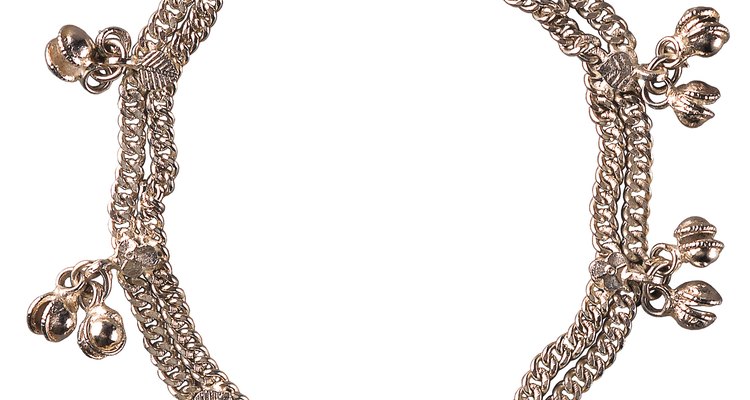
Comstock Images/Comstock/Getty Images
Many designers of high-quality costume jewelry often left their creations unmarked, and it's up to collectors to seek out ways to determine the true artists behind each of their pieces. Tracking down the authenticity of unmarked jewelry can prove to be a painstaking process, but there are tools and sources that can be used to positively identify almost any designer's handiwork. These mysteries are sometimes solved quickly as the works of impostors, but those who dig deeper with a true eye for the subtleties of unmarked jewelry are richly rewarded.
Distinctive Markings
Every designer has her own personal hallmark that was inherently present in every piece of her jewelry. For some it was the type and shape of the rhinestones they favored, for others the way the metal was soldered together or the weight and appearance of the metals used. Many of these visual cues are better found on the back of a piece than the front. Each maker is known for his personal distinction, and occasionally other manufacturers may have tried to copy these peculiarities but were unable to, and therefore in some instances, this lack of ability to emulate another's style might have become that designer's very hallmark. Check for the type of clasp on a bracelet or necklace or the way a pin is attached to a brooch. Note these and other distinctions in your piece of jewelry and they will provide strong hints as to who crafted it.
Utility Patents
Clever minds can work in reverse and note the types of hardware such as clasps, hinges and screw-clips on jewelry. Many designers of the '30s, '40s and '50s bought patents from mechanism inventors for exclusive use on their particular brands and lines. You may not be able to identify the maker of your pair of earrings, but you might be able to determine who invented the clips that hold them on someone's ears. Tracking down that information would lead you to discover that a certain manufacturer bought the rights to those exact type of clips from that particular inventor on a specific date or year, and that should help you find out who made those earrings. The place to start is with the patent number of the mechanism, and this is often referenced in the specifications of the patent, which are detailed descriptions of the mechanism with all of its working parts and how they are made. Specifications will also include the patent holder and any assignees as well as the unique features inherent in the patent itself. Keep in mind, however, that patents do expire, so this may not be the best place to begin your search, yet it could yield results in accordance with other information.
Art and Advertising
Design sketches and paintings were the templates from which jewelry makers crafted their works, and while not every design made it to production, the dynamics and colors remained steadfast foundations throughout a designer's line. Using these artworks will sometimes lead to a clue as to who produced a certain piece of jewelry. Companies would also produce advertising campaigns for their jewelry lines that would appear in boutiques and magazines. Referring to the illustrations in these promotional materials could shed some light on a bauble's origin. These methods are better used when you may already suspect that a piece of jewelry could be attributed to a specific designer who worked in a particular time period. Referring to the maker's advertising campaigns will confirm such suspicions or urge you to search further into the artworks of other manufacturers who may have utilized similar designs and patterns. This process will definitely narrow down the possibilities as to who made your piece of jewelry. Seek out the names of artists who worked with certain manufacturers and consult their design styles to match your piece against their work.
Reference Guides
Cross-reference your jewelry against photographs and information contained in any number of reference guides online like IllusionJewels.com. You may also check in bound-cover reference books such as "Fabulous Costume Jewelry" by Vivienne Becker. Compare your piece against the indications, makers' marks and design choices of the examples contained within each of them. Not all manufacturers and time periods are represented in every compilation, but these guides are as good a place to start as any other.
Related Articles
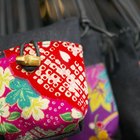
How to Find Wholesale Authentic Handbags

How to Read Fine Silver Jewelry Marks ...

How to Tell If a Silver Chain Is Real
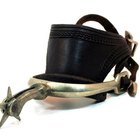
How to Identify Crockett Spurs

Brooch Vs. Pin

How to Identify Your Tissot

How to Identify Gruen Watches

How to Identify a Knockoff LeCoultre ...
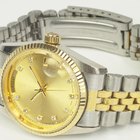
How do I Tell a Fake Omega ...

How to Spot a Fake BB Simon
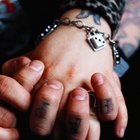
How to Know If You Have the Real ...
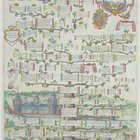
How to Find Out if You Are Related to ...

How to Find Lost Friends by Photo

How to Tell a Real Tiffany's Necklace ...

How to Spot Fake Michael Kors Handbags
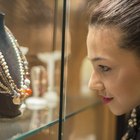
What Is Trifari Jewelry?

What Is a Figaro Style Necklace?
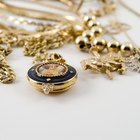
How to Number a Jewelry Inventory

How to Spot a Fake Mont Blanc Watch
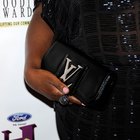
How to Identify Authentic Louis Vuitton ...
References
Writer Bio
Marc Gottlieb has been writing since 1997, when he was hired as a guest columnist for "Films in Review" magazine. He now serves as a full-time writer and contributor to several online publications. Gottlieb attended the School of Visual Arts in New York City.
Photo Credits
Comstock Images/Comstock/Getty Images